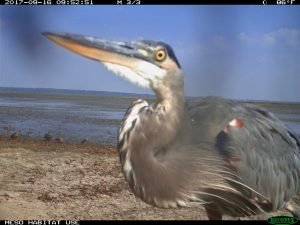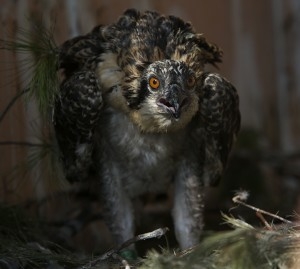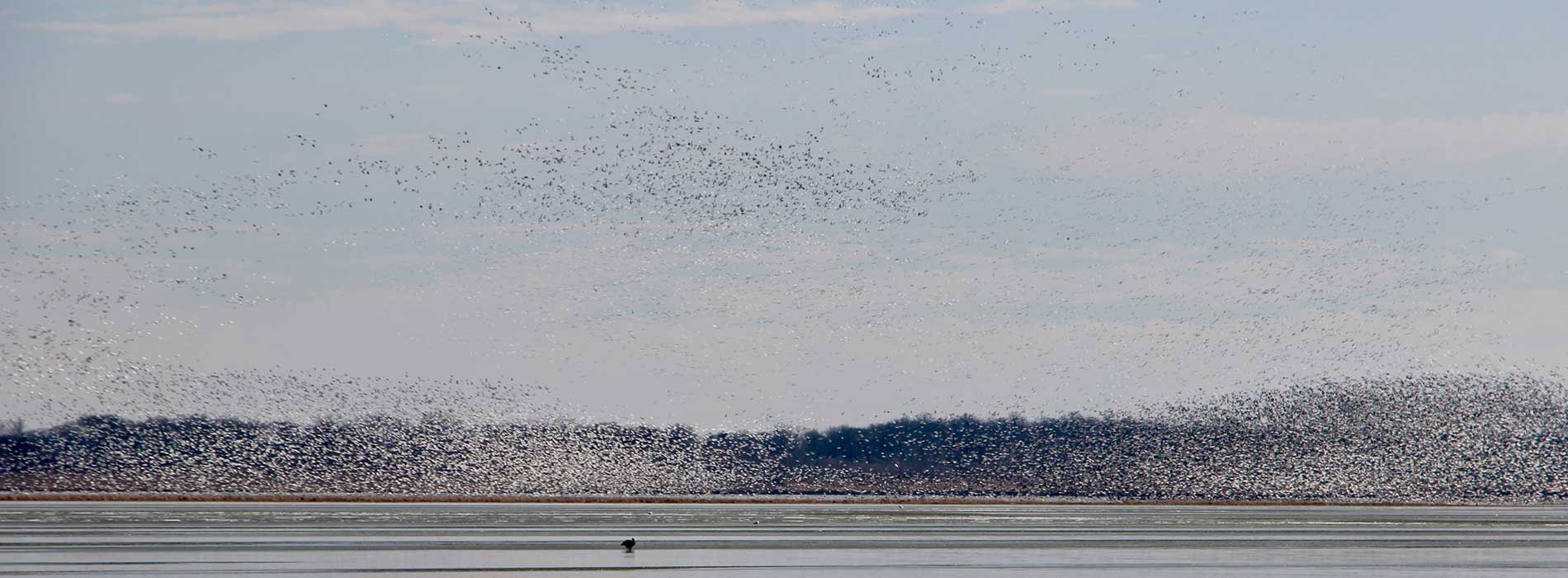
Camera Traps
Camera traps are stationary cameras, which are triggered by animals moving past. They are a non-invasive and relatively inexpensive method of sampling communities of medium- and large-sized mammals, birds, and reptiles. The TFSE has been collaborating with UIS Professor Dr. Tih-Fen Ting on a camera trapping project in the Emiquon Preserve.
This project seeks to examine populations of semi-aquatic mammals of the Emiquon Preserve, with a particular interest in how they respond to changes in the water levels within the lakes. In addition to cataloguing the semi-aquatic mammals, other species which are captured by the camera traps will also be identified, allowing for a better understanding of the biodiversity utilizing the Emiquon Preserve.
Carbon and Nitrogen Dynamics
Using a combination of observational studies, field experiments, and simulation modeling, Professor Hua Chen (Department of Biology, UIS), his colleagues, and his students have been looking at how ecosystem restoration influences carbon and nitrogen dynamics in restored wetlands and prairies.
- Chen, H, S Popovich, A McEuen, and B Briddell. 2017. Carbon and nitrogen storage of a restored wetland at Illinois’ Emiquon Preserve: potential for carbon sequestration. Hydrobiologia. doi: 10.1007/s10750-017-3218-z.
Insect Venom
UIS Chemistry Professor Stephen Johnson and his students have performed a survey of Phospholipase A₂ (PLA₂) activity of the venom from the aculeate (stinging) Hymenoptera at the Emiquon Preserve finding over 30 species with significant activity. Currently they are focused on two common residents of the restored prairie: the northern paper wasp (Polistes fuscatus) and the bald faced hornet (Dolichovespula maculata). They are investigating PLA₂’s primary structure as well as their unique enzyme kinetics to determine their role in inflammatory and nervous system disorders.
Microbial Ecology
Professors Michael Lemke (Department of Biology, UIS) and Keenan Dungey (Department of Chemistry, UIS), along with their students and collaborators (research scientists at the University of Illinois Urbana-Champaign, the American Museum of Natural History, NY, and the University of Maringa, Brazil) have been monitoring physical and chemical variables and describing microbial (e.g., bacteria, protists, algae) community composition of Thompson Lake water and sediments since 2008. The goal of this long-term project has been to elate changes in the aquatic microbial communities to the structural and functional changes that occur to an ecosystem undergoing ecological restoration.
- Lemke, MJ, SF Paver, KE Dunger, LFM Velho, AD Kent, LC Rodrigues, DM Kellerhals, and MR Randle. 2017. Diversity and succession of pelagic microorganism communities in a newly restored Illinois River floodplain lake (pdf). Hydrobiologia. doi: 10.1007/s10750-017-3327-8.
Praire Restoration
Professor Amy McEuen (Department of Biology, UIS) and her students have been focused on determining what factors influence patterns of plant biodiversity at the Emiquon Preserve’s tallgrass prairie restoration sites. Currently, they are focused on two projects: (1) Can species’ geographic distributions predict establishment success in tallgrass prairie restorations? (2) How has the tallgrass prairie flora changed after nine years of restoration?
Osprey Hacking

Osprey are a rare nesting species in Illinois and is listed as endangered by the state. With funding from U.S. Fish and Wildlife Service and in collaboration with Illinois Department of Natural Resources, Professor Tih-Fen Ting (Environmental Studies Department, UIS) and her students are working to establish a self-sustaining breeding population of osprey to aid its recovery in Illinois. 5-week-old osprey chicks from the Chesapeake Bay area (i.e., translocation) are brought over and raised in Central Illinois until they fledge. This technique which is called “hacking”, is a commonly used for reintroduction of osprey populations because of its potential to establish site fidelity in the released birds.
Plastics
Plastics and plastic pollution have received a great deal of media attention of late. Much of the focus has been on pollution in the oceans, with talk of the Pacific gyre and its island of plastic debris, though increasingly the problems of plastic debris in freshwater systems is gaining interest.
Two research projects on plastic are currently in progress:
1-The TFSE in collaboration with UIS Professor Dr. Anne-Marie Hanson, is examining micro-plastics (those from micro-beads, micro-fibers, and the degradation of larger plastics) in the Illinois Rivera and other bodies of water in central Illinois.
2-In collaboration with UIS Professor Dr. Megan Styles and one of her Environmental Studies courses, the TFSE is examining larger plastic debris (visible to the naked eye) and other litter present in a variety of freshwater systems. One of the goals of this project is to examine how management choices by nature area administrators impact the amount and type of litter and debris that accumulate in these areas.
